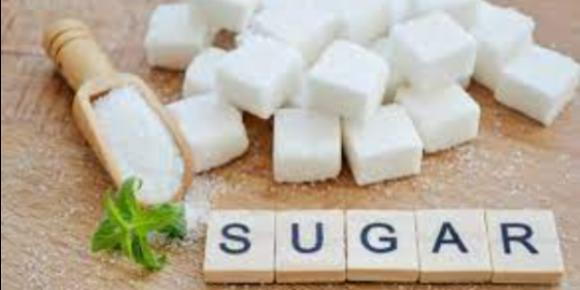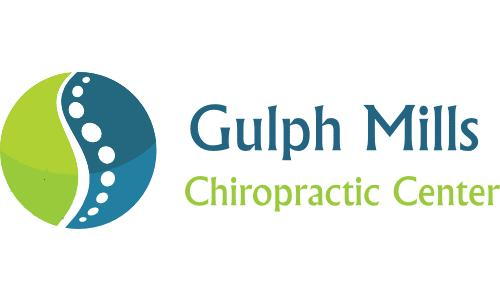
- posted: Nov. 29, 2021
I know what you're thinking. "What does sugar have to do with chiropractic care?" Technically, nothing, but at Gulph Mills Chiropractic Center, we care for our patients with a "whole body" approach. I know what you're thinking again (I must be clairvoyant - man, I should play the lottery or something, right?) "What on Earth is a 'whole body' approach?" Dr. Roger doesn't just adjust your spine and extremity joints; Dr. Roger can help you with questions about nutrition, exercise, and stretches to help make your adjustment as effective as possible. The whole body approach takes into account stressors in your life, dietary concerns, and movement concerns.
 So now take a minute to read this shocking article by UCSF and think about reading your food labels more carefully, too. Then call Gulph Mills Chiropractic Center to schedule your Complimentary Initial Assessment: 484-751-5037.
So now take a minute to read this shocking article by UCSF and think about reading your food labels more carefully, too. Then call Gulph Mills Chiropractic Center to schedule your Complimentary Initial Assessment: 484-751-5037.
Hidden in Plain Sight
Added sugar is hiding in 74% of packaged foods
We tend to think that added sugar is mainly found in desserts like cookies and cakes, but it's also found in many savory foods, such as bread and pasta sauce. And some foods promoted as "natural" or "healthy" are laden with added sugars, compounding the confusion. In fact, manufacturers add sugar to 74% of packaged foods sold in supermarkets.1 So, even if you skip dessert, you may still be consuming more added sugar than is recommended.
How do I know if I'm eating added sugar?
Added sugar is hiding in foods that many of us consider healthy, like yogurt and energy bars. It is also added to savory foods, such as ketchup, breads, salad dressing and pasta sauce.
The U.S. Food and Drug Administration (FDA) requires food producers to list all ingredients in their foods. But added sugar comes in many forms – which is why it's so hard to find on the ingredients label.2
There are at least 61 different names for sugar listed on food labels. These include common names, such as sucrose and high-fructose corn syrup, as well as barley malt, dextrose, maltose and rice syrup, among others.
While product labels list total sugar content, manufacturers are not required to say whether that total includes added sugar, which makes it difficult to know how much of the total comes from added sugar and how much is naturally occurring in ingredients such as fruit or milk. That makes it very difficult to account for how much added sugar we're consuming.2,3
How much is ok?
Daily Added Sugar Limits Women: 6 tsp. (25g) Men: 9 tsp. (38g) Children: 3-6 tsp. (12-25g)
Unlike salt and fats that are added to foods, nutrition labels don't provide you with a daily reference value for added sugar.
However, the American Heart Association (AHA) recommends no more than 9 teaspoons (38 grams) of added sugar per day for men, and 6 teaspoons (25 grams) per day for women.5 The AHA limits for children vary depending on their age and caloric needs, but range between 3-6 teaspoons (12 - 25 grams) per day.
Even "healthy" foods can be high in sugar
With as many as 11 teaspoons (46.2 grams) of added sugar in some 12-oz. sodas, a single serving exceeds the AHA recommendation for men and is about twice the allowance for women and children. But sugar isn't only in beverages and sweet baked goods. Here are some healthy-looking items you might find in the supermarket that also have high sugar contents:
- One leading brand of yogurt contains 7 teaspoons (29 grams) of sugar per serving.
- A breakfast bar made with "real fruit" and "whole grains" lists 15 grams of sugar.
- A single cup of bran cereal with raisins, in a box advertising "no high-fructose corn syrup," contains 20 grams of sugar per serving.
- A cranberry/pomegranate juice product, also advertising "no high-fructose corn syrup" and "100% Vitamin C," contains 30 grams of added sugar per 8 oz. serving. Some of the sugar is naturally occurring, but some of it has been added.
Changing labels to help consumers
Americans consume 57 pounds of added sugar each year, on average.
Making healthy food decisions requires having complete information on the food label. When sugars are hidden unrecognizably in most packaged foods, it's a difficult choice to make.
To address this, the FDA is considering revising the current label design, including changing the way a serving size is measured and possibly adding a separate line item highlighting the amount of added sugar.4
There is active discussion right now in public health circles about how to make nutrition labels easier to read and the need for clearer recommendations on how much added sugar is safe to consume. Stay tuned to SugarScience as we follow this discussion and interpret its impact for consumers.
https://sugarscience.ucsf.edu/hidden-in-plain-sight/#.YBLqNOhKiM8
Location
Find us on the map
Courtside Square Apartment Building
570 West Dekalb Pike, Ground Floor, Suite 113
King of Prussia, PA 19406, United States
Office Hours
Our Regular Hours
7:30 am - 12:30 pm
3:00 pm - 6:00 pm
10:00 am - 12:30 pm
3:00 pm - 6:00 pm
7:30 am - 12:30 pm
7:30 am - 12:30 pm
3:00 pm - 6:00 pm
Closed
Select Saturdays from 9am to 11am
Apr 27, May 11, Jun 1
Closed
